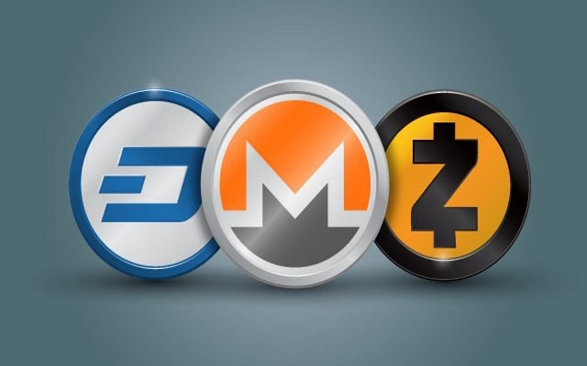It is possible that you have heard of or even traded the crypto asset, AVAX, at least once or more on any of the supporting crypto exchanges. It is also likely that you are just hearing of AVAX and Avalanche Network for the first time. Whichever category you fall into, you are certainly in the right place as we will carefully dissect the fastest smart contracts platform in the blockchain industry, based on the time-to-finality measure.
Avalanche Network is a next-generation blockchain platform developed to solve some of the key challenges facing the nascent cryptocurrency space, including lack of scalability, low security, and slow transaction completion rate. Particularly, the crypto project was built to enable fast, secure, and scalable transactions for a variety of use cases.
In this article, we will discuss how Avalanche Network works and how it differs from other blockchain platforms. We will also discuss Avalanche’s use cases and the current state of development. By the end of this article, you will have a good understanding of what Avalanche is and how it affects the future of blockchain technology.
Overview of the Avalanche Network
Launched in 2020 by the development team Ava Labs, Avalanche Network is an open-source distributed ledger technology with smart-contract functionality that enables blazingly fast, low-cost, and eco-friendly transactions. In other words, it is an open, programmable smart-contract platform for decentralized applications (DeFi).
Historically, the idea behind the protocol was first published on the InterPlanetary File System (IPFS) in May 2018 by a pseudonymous group of innovators going by the name ‘Team Rocket’. The software engineer Emin Gün Sirer alongside his doctoral students Maofan ‘Ted’ Yin and Kevin Sekniqi later developed the idea, resulting in the Avalanche of today.
The future-proof blockchain prides itself as the world’s most developer-friendly Layer 1 blockchain and the fastest smart-contract platform in the blockchain industry, as measured by time-to-finality. Designed to be compatible with the popular programming language Solidity, Avalanche serves myriad purposes.
The blockchain network which has thousands of nodes uses the proof-of-stake (PoS) consensus algorithm for Sybil protection. Notably, the Avalanche Network has thousands of validator nodes on its network which causes it to have a transactional finality of less than two seconds (<2 secs).
In terms of security, while most blockchains like Bitcoin and Ethereum have their safety threshold pegged at 51%, that of the Avalanche blockchain is 80% parameterized.
Read Also: What is Litecoin (LTC)?
Avalanche Network Design
Among the numerous parameters that set the Avalanche Network apart from other blockchains is its unique consensus protocols. Unlike blockchains that use only proof of work (PoW) such as Bitcoin and Ethereum Classic (ETC) or proof of stake (PoS) such as Ethereum (ETH) and Cardano (ADA), the Avalanche Network uses rare and multiple consensus mechanisms to operate.
Exceptionally, the blockchain protocol has four basic interrelated mechanisms that comprise structural support of the consensus method, including Slush, Snowflake, Snowball, and Avalanche. But to prevent Sybil attacks, the Layer 1 smart-contract platform employs the proof-of-stake (PoS) consensus. Slush is the primary consensus protocol of this family and it is non-Byzantine Fault Tolerant (BFT).
So how does the Avalanche consensus protocol work?
Essentially, nodes in the network (referred to as ‘validators’) receive transactions and then send them to a subset of other nodes. These nodes then validate the transaction and approve or reject it. When a transaction is approved by a certain threshold of nodes, it is considered part of the next block in the chain. If it is rejected, it will not be added to the chain.
This process is repeated until a consensus is reached on the validity of the transaction. Because the Avalanche consensus protocol allows for a high degree of parallelism, it can reach consensus faster than other consensus mechanisms.
To note, the AVA codebase also known as the AVA Developer Accelerator Program (DAP) for the Avalanche consensus protocol was released in March 2020 as open-source by Ava Labs.
The Avalanche Network also uses a consensus protocol called ‘Snowman’ to ensure the integrity and security of its network. Snowman is a variant of Snowflakes and is the primary consensus mechanism used by the Avalanche blockchain.
Snowman introduces an additional layer of security by incorporating ‘frozen’ nodes into the consensus protocol. These frozen nodes, also called ‘watchers’, do not participate in the transaction verification process. , Instead watchers monitor the network to ensure it is functioning properly. Additionally, the blockchain’s design contains a concept dubbed ‘Subnet’.
Read Also: What is Bitcoin Cash (BCH)?
What is a Subnet?
The popular smart-contract platform Avalanche is described by the team as a network of networks. This stems from the fact that the Avalanche Network comprises many Subnets with each Subnet running one of the more heterogeneous chains. That is, the blockchain platform is not just a single chain running a single, uniform type of block like most blockchains today.
A subnet is a tool that enables anyone to build a custom blockchain network on Avalanche. Notably, these Subnets are seamlessly interoperable with the broader Avalanche ecosystem and they offer remarkable benefits. With subnets, the Avalanche platform can process unlimited transactions per second (TPS).
Avalanche’s primary network, Snowman, is a Subnet that has three chains namely Contract Chain (C-Chain), Exchange Chain (X-Chain), and Platform Chain (P-Chain). The C-Chain runs on the Ethereum Virtual Machine powered by Avalanche’s Snowman consensus protocol. The C-Chain used to deploy and run smart contracts, is capable of performing all the functions a typical Ethereum client can by using the Ethereum-standard RPC calls.
On the other hand, the Exchange Chain serves as a decentralized platform for creating and trading assets. Whereas, the Platform Chain is the metadata blockchain on Avalanche that coordinates validators, and keeps track of active subnets while also enabling the creation of new subnets.
According to Stani Kulechov, the founder and CEO of Aave, “Avalanche Subnets enable us to create an ideal environment for institutions to migrate on-chain and experience the power of these protocols first-hand as users rather than just as investors.” “Financial applications native to Web3 will increasingly become the foundation of the global financial system. Subnets align perfectly with our objective of helping builders build the blue chip financial projects of the future,” Saurabh Sharma, Partner and Head of Venture Investments at Jump Crypto also remarked.
Read Also: What is BNB?
Avalanche Blockchain Use Cases
A lot is possible with the next-generation platform. As a layer one and smart contract-enabled blockchain, Avalanche allows the building of Solidity-compatible decentralized applications (dApps) that are highly scalable and cheap to use. Customized virtual machines, private or public blockchains, and Ethereum dApps with quick transaction completion rates can also be launched using Avalanche.
Moreover, Avalanche’s remarkable capabilities make it highly valuable in myriad sectors, including decentralized finance (DeFi), and non-fungible tokens (NFTs). Being a strong verifiable platform, institutions, enterprises, and governments can leverage Avalanche blockchain for central bank digital currencies (CBDC), debt financing, digital identity, document tracking, fund management, insurance, intellectual property, and real estate, among others.
The Avalanche blockchain’s speed and security also make it ideal for financial applications such as cross-border payments, asset tracking, and trade finance. For example, banks can use the blockchain to process and settle transactions in real time, increasing efficiency and reducing the risk of fraud.
Another industry that could benefit from the Avalanche blockchain is the supply chain industry. The traceability functions of the blockchain make it suitable for tracking the movement of goods through the supply chain. This could help improve efficiency, hinder counterfeiting, and increase transparency for consumers. These are just a few examples of the many potential real-world applications of Avalanche.
Some Leading Projects in the Avalanche Ecosystem
Currently, there are over 470 projects built on the Avalanche blockchain, all in the last 28 months.
- Aave
- BenQi
- Kalao
- 1inch
- Penguin Finance
- TradeJoe
- Platypus Finance
- Vector Finance
- Yeti Finance
- Colony Lab
- Nereus Finance
What is AVAX?
AVAX is the native currency of the Avalanche Network. The Layer 1 crypto asset was created and issued in September 2020 by Ava Labs. It is used as a tool to secure the network through staking. When executing a transaction using the Avalanche network, operation fees are collected in AVAX. Very importantly, AVAX provides a basic unit of account between the multiple subnetworks (subnets) created on the Avalanche platform.
AVAX has a maximum supply and total supply of 720,000,000 and 416,988,132 tokens. The 18th-largest cryptocurrency by market capitalization at the time of writing reached its all-time high on 21 November 2021 when its price per coin touched $146.22. AVAX’s all-time low of $2.80 occurred on December 31, 2020.
Avalanche explorer shows that 63.93% of AVAX’s supply is staked while 2,082,821.4 AVAX have been burned as fees so far. At the time of writing, 2,125,088 wallets are holding AVAX.
Conclusion
Avalanche Blockchain has emerged as a strong player in the blockchain space. Its ability to process unlimited transactions in a second (with subnets) is just one of its many impressive characteristics. With its fast transaction times, high scalability, and enhanced security, it is not surprising that the platform is attracting attention from various industries and investors.
As with any new technology, there are a few challenges and limitations faced by the blockchain platform. Notwithstanding the potential of Avalanche (AVAX) is undeniable. But as you probably know, there is often no certainty regarding what the future holds for blockchain platforms, including the Avalanche Network and its native token. This is one of the reasons why you must keep closely following developments in the space.
Credit: Ndianabasi Tom
A crypto journalist and content writer who has been talking about cryptocurrency and blockchain technology since 2018, Ndianabasi is a Writer at Crypto Asset Buyer (CAB).
Discover more from Crypto Asset Buyer
Subscribe to get the latest posts sent to your email.




